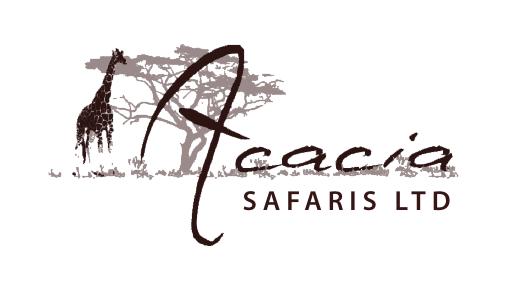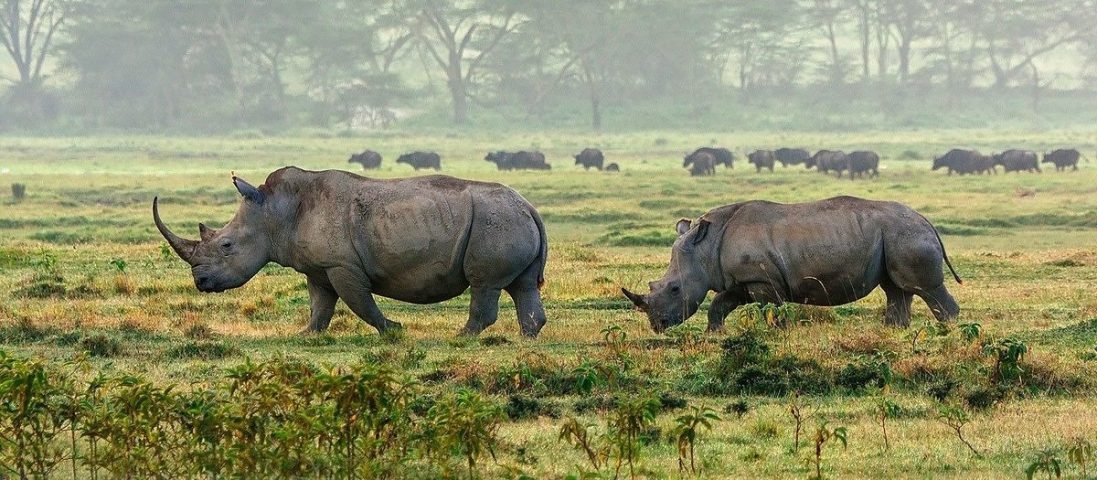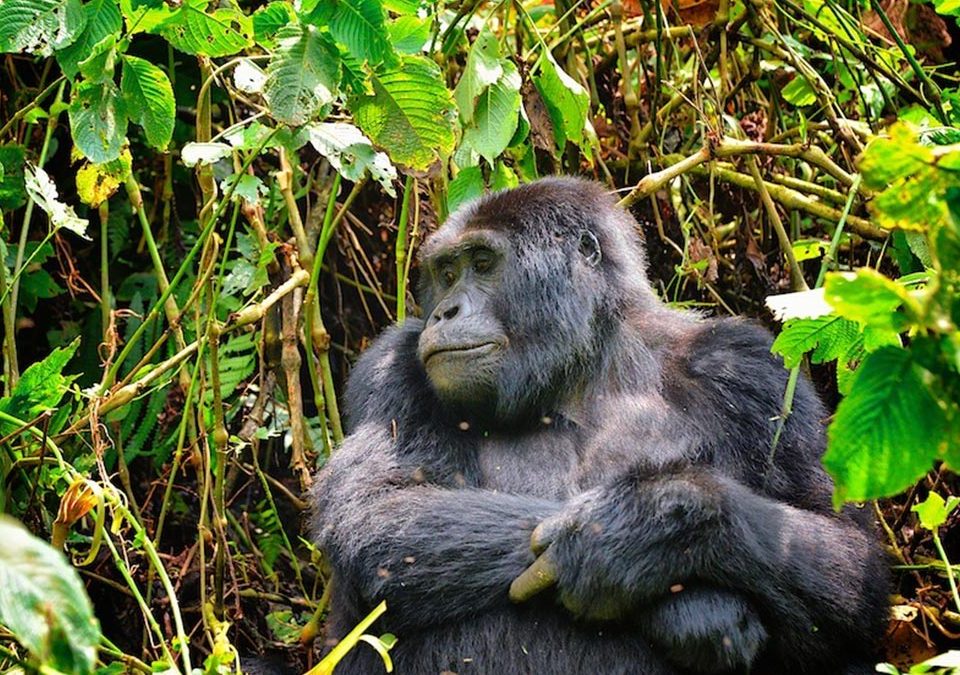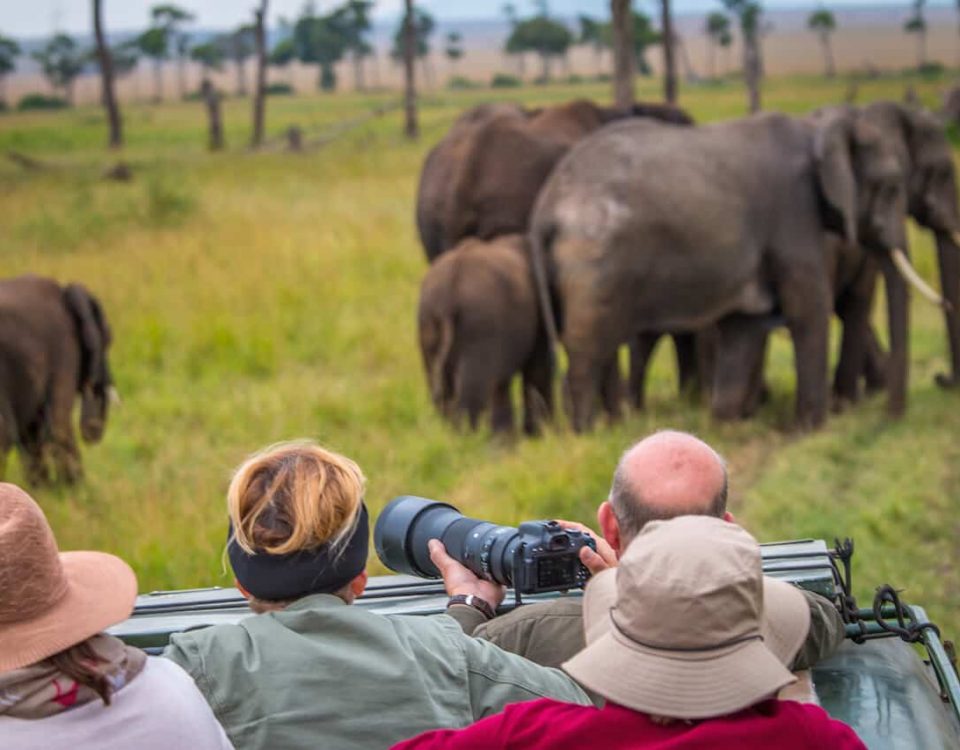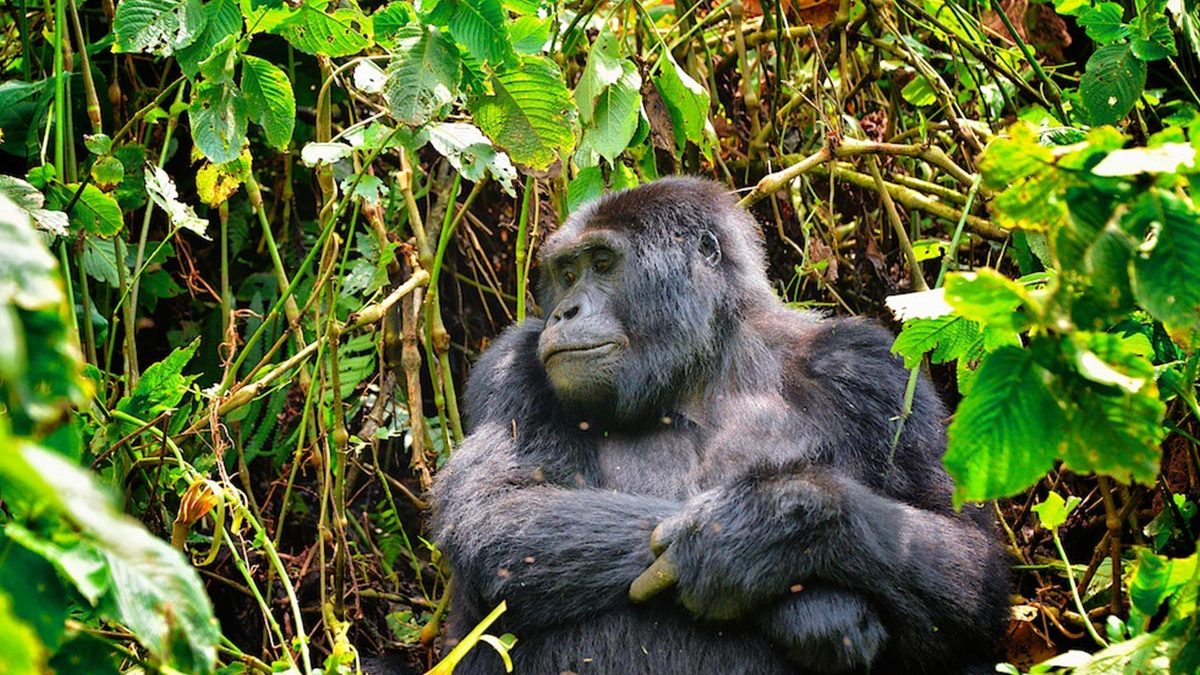
Best Time for Gorilla Trekking & Wildebeest Migration Safari
December 8, 2023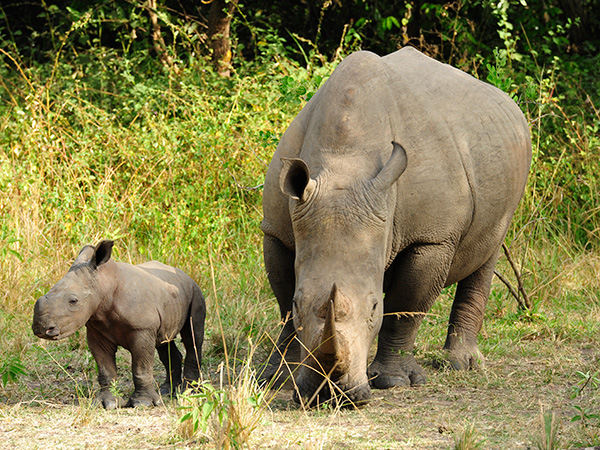
Things to do at Ziwa
December 20, 2023Wildlife Safaris in Tanzania
Tanzania is renowned for its rich wildlife and offers incredible opportunities for wildlife safaris in Africa. Wildlife Safaris in Tanzania /Tanzania wildlife Safaris are tours that are designed to allow travelers to explore the diverse range of wildlife habitats in Tanzania as they spot some of the top wildlife species, including the African Big Five Animals (lion, leopard, rhino, buffalo, and Elephant). Tanzania is a safari insider boasting over twenty National Parks, teeming with wildlife all year round. Best Safaris in Tanzania will allow you to explore the top National Parks like Serengeti, Ngorongoro, Tarangire, Arusha, and Lake Manyara during your Wildlife Safaris in Tanzania.
On top of the African Big Five, Tanzania also hosts one of the most spectacular natural wonders, the wildebeest migration where millions of mammal grazers move through Tanzania Serengeti National Park in search of fresh pastures and water. This natural spectacle is the largest terrestrial mammal migration on earth and is also dubbed the greatest show on earth. Wildlife viewing in Tanzania can be done in pop-up roof vehicles during game drives in top safari parks like Serengeti National Park. Acacia Safaris offers the best Tanzania safaris with well-crafted Tanzania wildlife safari packages that will allow you to explore the diversity of Tanzania. Our best Tanzania safaris will take you to the popular northern safari circuit with safari parks like Serengeti, Tarangire, Arusha, Lake Manyara, and Ngorongoro Among others. Besides wildlife, you can also enjoy various adventures in Tanzania including Beach holidays, Bird watching, and Mountain climbing among others.
Wildlife in Tanzania
Tanzania has 20 percent of the species of Africa’s large mammal population, found across its reserves, and conservation areas, including National Parks. Tanzania is home to a diverse range of wildlife, including the renowned “Big Five” game animals: lions, elephants, buffalos, leopards, and rhinoceros. During your Tanzania wildlife safaris, you will also spot several other species like giraffes, zebras, wildebeests, hippos, crocodiles, cheetahs, hippopotami, waterbuck, common warthog, elephant, crocodile, sitatunga as well as water birds such as flamingoes and ducks and various antelope species.
Tanzania is also famous for the annual Great Migration, where millions of mammal grazers especially wildebeests and zebras traverse the Serengeti, the country’s second-largest national park area at 14,763 square kilometers (5,700 sq. mi), located in northern Tanzania in search of fresh grazing.
Wildebeest Migration in Serengeti
The wildebeest migration is one of the most incredible natural spectacles that occur in Tanzania. The Great Migration is an annual movement of millions of wildebeests, zebras, and other herbivores across the Serengeti-Mara ecosystem, which includes areas in Tanzania and Kenya. This remarkable event is driven by the search for fresh grazing and water. The migration follows a circular pattern, covering over 1,800 miles (2,900 kilometers) throughout the year.
Best Places to Witness the Migration in Tanzania – Where to see wildebeest in Tanzania – Serengeti National Park
Wildebeest Migration Takes place in Serengeti National Park.
Southern Serengeti (December to March): This is where the wildebeests gather to give birth to their young. Witnessing the calving season is a unique experience as thousands of wildebeest calves are born within a short period. These newborn calves attract a lot of predators that come to take advantage of the vulnerable and inexperienced newborn wildebeests. If you are planning a wildlife Safari to Tanzania during these months and would wish to experience this remarkable experience, the best place to visit is Southern Serengeti. This month also allows you to spot all the big cats however, these months are usually associated with heavy rains.
Western Serengeti (April to July): During this period, the migration moves towards the western corridor of the Serengeti. If you’re lucky, you may witness river crossings as the herds take on the perilous journey across crocodile-infested waters, usually around June and July.
Northern Serengeti and Maasai Mara (July to October): This is where the herds gather before crossing into Kenya’s Maasai Mara Reserve. The dramatic river crossings at the Mara River are a sight to behold. Here, you can witness the epic struggles of the wildebeests as they navigate the strong currents and evade the predators that lie in wait.
Best places to visit for wildlife viewing safaris – Where to go for Wildlife Safaris in Tanzania
Serengeti National Park
Serengeti National Park in Tanzania is known for its vast plains, diverse wildlife, and the Great Migration. The Serengeti National Park covers an area of approximately 14,750 square kilometers (5,700 square miles), making it one of the largest national parks in Africa.
The park is home to a wide variety of wildlife, including the famous African Big Five (elephant, lion, leopard, buffalo, and rhinoceros). Serengeti also hosts large populations of wildebeest, zebras, giraffes, hippos, crocodiles, cheetahs, and numerous species of antelope. Serengeti is a haven for birdwatchers too, with over 500 bird species recorded.
Getting There: You can fly into Kilimanjaro International Airport (JRO) or Julius Nyerere International Airport (DAR), and then take a domestic flight to one of the park’s airstrips. Alternatively, you can also reach the park by road through various entry points.
Tarangire National Park
Tarangire National Park is located in northern Tanzania, covering an area of approximately 2,850 square kilometers. It is named after the Tarangire River, which runs through the park and provides a vital water source for wildlife during the dry season.
The park is known for its diverse wildlife, including large herds of elephants, zebras, wildebeest, giraffes, and buffalo. It is also home to predators such as lions, leopards, cheetahs, and hyenas. Tarangire is particularly known for its large elephant population, said to be one of the largest in Africa, and visitors can often witness herds of up to 300 elephants roaming the savannah.
Tarangire National Park’s landscape is made up of vast grasslands, acacia woodlands, and baobab trees, providing a unique and beautiful backdrop for exploring the diverse wildlife. Visitors can enjoy game drives or guided walking safaris to observe the animals up close and personal.
Getting there
To get to Tarangire National Park, visitors can fly into Kilimanjaro International Airport or Arusha Airport, both of which offer domestic flights to nearby airstrips. From there, visitors can also embark on a transfer by road to the park.
Lake Manyara National Park
Lake Manyara National Park is located in northern Tanzania, covering an area of approximately 330 square kilometers. The park is situated around Lake Manyara, a shallow freshwater lake that is known for its flocks of flamingos and other birdlife.
Lake Manyara is home to a variety of wildlife, including elephants, giraffes, zebras, wildebeest, and several species of primates such as baboons and vervet monkeys. It is also known for its tree-climbing lions that are often seen resting on branches in the open woodland. The Park has a varied landscape, offering a combination of dense forests, grassy plains, and rocky cliffs. There are also several natural hot springs, where visitors can enjoy a relaxing soak.
Getting to Lake Manyara
To get to Lake Manyara National Park, visitors can fly into Kilimanjaro International Airport or Arusha Airport, both of which offer domestic flights to nearby airstrips. From there, visitors can embark on a transfer by road to the park.
Ngorongoro Conservation Area – Wildlife Safaris in Tanzania
The Ngorongoro Conservation Area is a UNESCO World Heritage site located in northern Tanzania. It spans an area of approximately 8,292 square kilometers and includes the renowned Ngorongoro Crater, which is often referred to as the “Eighth Wonder of the World”. The Ngorongoro Crater is the main attraction of the conservation area and is the world’s largest intact caldera. It serves as a natural enclosure for a vast array of wildlife, making it one of the most densely populated wildlife areas in Africa.
The crater is home to a large concentration of predators such as lions, hyenas, and cheetahs, as well as numerous herbivores including wildebeest, zebras, and buffalo. You can also find elephants, rhinos, and various species of antelope within the conservation area.
Beyond the Ngorongoro Crater, the conservation area encompasses the surrounding highland plains, a fertile area that supports a range of wildlife including Maasai giraffes, leopards, and hippos. It is also a paradise for birdwatchers, with over 500 species of birds recorded in the area.
Getting to Ngorongoro
To reach the Ngorongoro Conservation Area, visitors can fly into Kilimanjaro International Airport or Arusha Airport and then drive or take a domestic flight to the town of Karatu, which serves as the gateway to the conservation area. From there, it is approximately a one-hour drive to the entrance of the Ngorongoro Crater.
Best Time to Go for Wildlife Safaris in Tanzania
Tanzania can be visited all year round however the best time to visit Tanzania is during the dry season, Between June and October. The dry season is considered the best time for wildlife viewing. Animals gather around water sources, and vegetation is sparse. It’s also a great time to witness the Great Migration in the Serengeti.
Acacia Safaris Limited is the best tour operator that can help you arrange your dream Tanzania Safaris. We also offer extended tours to Uganda, Rwanda, and Kenya.
Tanzania Safaris Tour Related Searches
- Tanzania Tourist Attractions Ideas
- Tanzania Budget Safaris
- Bird Watching Trips in Tanzania
- Chimpanzee Trekking in Tanzania
- Cultural Village Tour in Tanzania
- Africa Adventure Tours
- East Africa Safaris
Popular Packages
- 3 Days Uganda Savannah Wildlife Tour
- 4 Days Savannah Wildlife Safari to Uganda
- 4 Days Uganda Wildlife Safari
- 4 Days Ultimate Primates Safari & Wildlife Tour Uganda
- 6 Days Uganda Wildlife Safaris Tour
- 9 Days Uganda Primates Tour
- 9 Days Uganda Adventure Safari
- 12 Days Uganda Adventure Safaris Tour
- 19 Days Uganda Classic Safari Experience
- 5 Days Uganda Rwanda Safari
- 7 Days Uganda Gorilla Tour Rwanda Wildlife Safari
- 10 Days Uganda Rwanda Wildlife Safari
- 12 Days Kenya Uganda Safari
- 12 Days Tanzania Uganda Safari
- 13 Days Rwanda and Uganda Safari
- 13 Days Tanzania Uganda Tour
- 17 Days Uganda Kenya Tanzania Safari
Top Related searches
- 3 Days Uganda Gorilla Safari
- 3 Days Uganda Gorilla Trekking Safari Bwindi
- 4 Days Uganda Gorilla Tour
- 5 Days Western Uganda Safari from Kampala City
- Wildlife safaris
- Wildlife & gorilla safaris
- Africa Safaris
- Uganda Adventure tours
- 5 Days Uganda Rwanda Safari
- 7 Days Uganda Gorilla Tour Rwanda Wildlife Safari
- 10 Days Uganda Rwanda Wildlife Safari
- 12 Days Kenya Uganda Safari
- 12 Days Tanzania Uganda Safari
- 13 Days Rwanda and Uganda Safari
- 13 Days Tanzania Uganda Tour
- 17 Days Uganda Kenya Tanzania Safari
